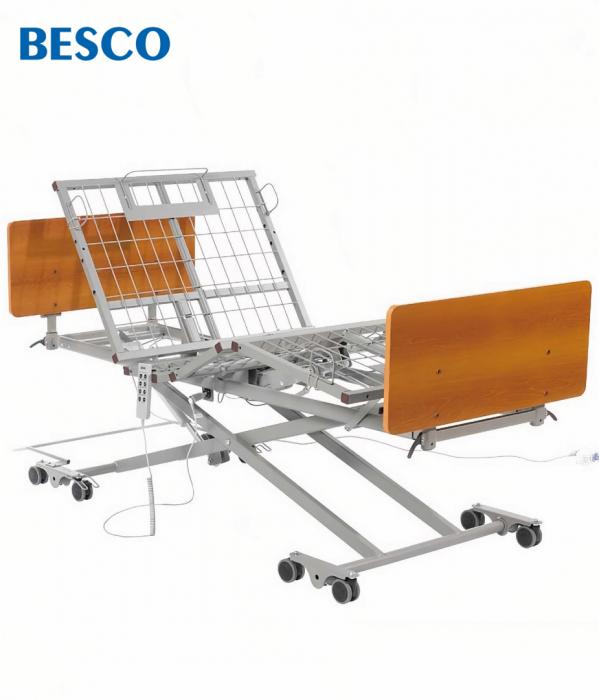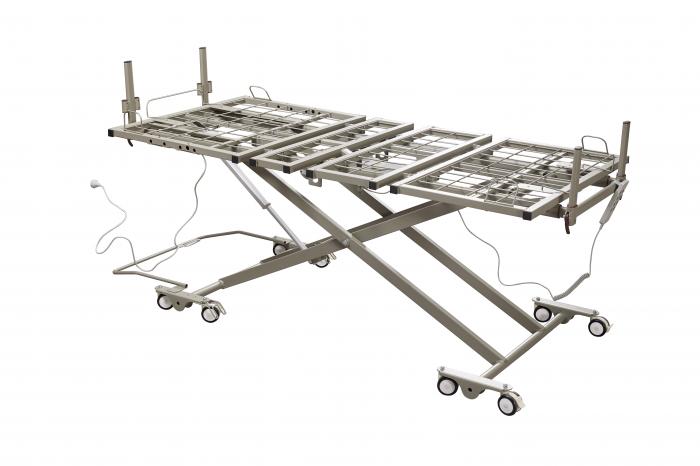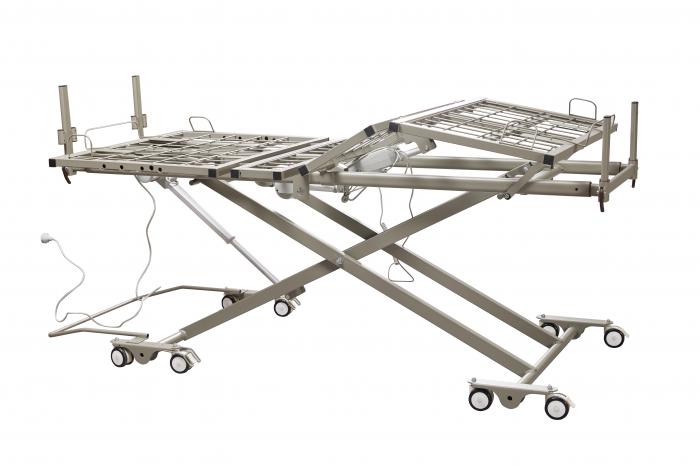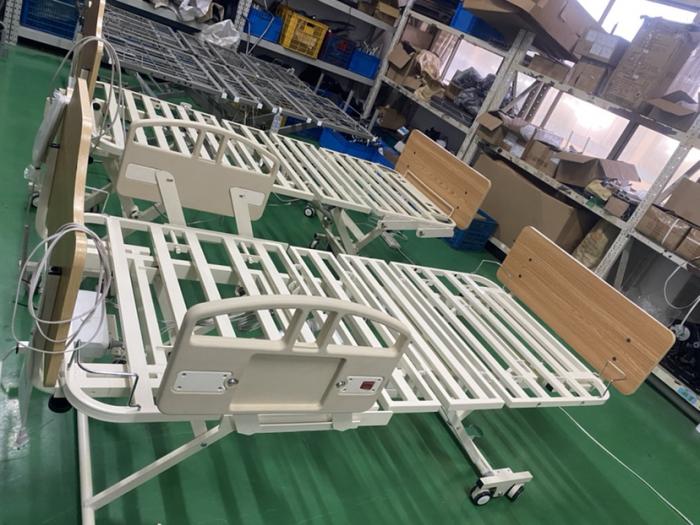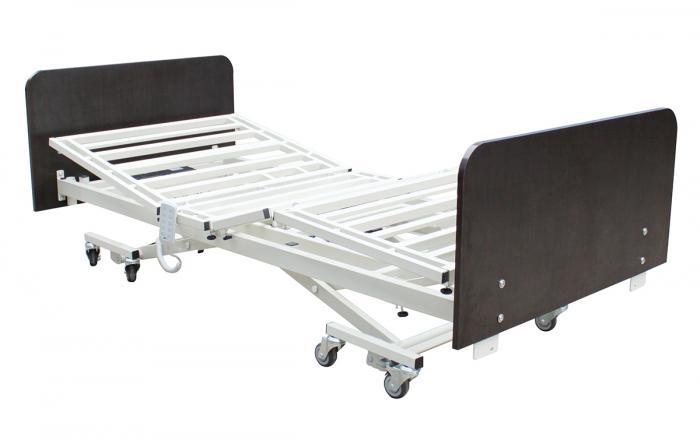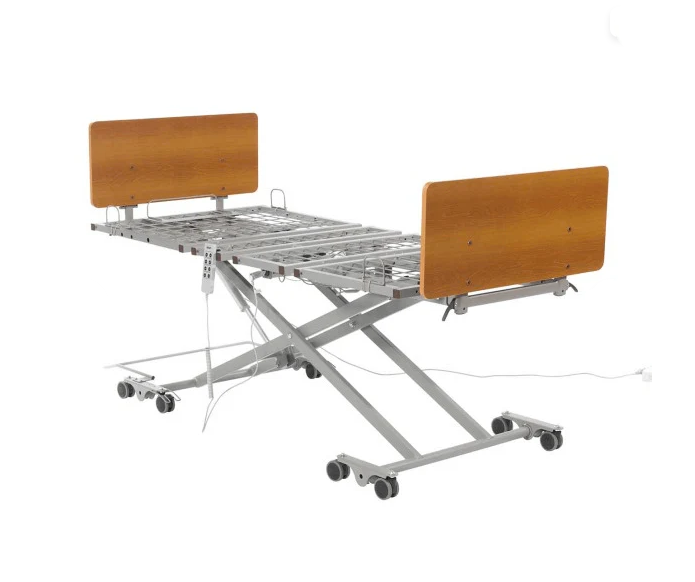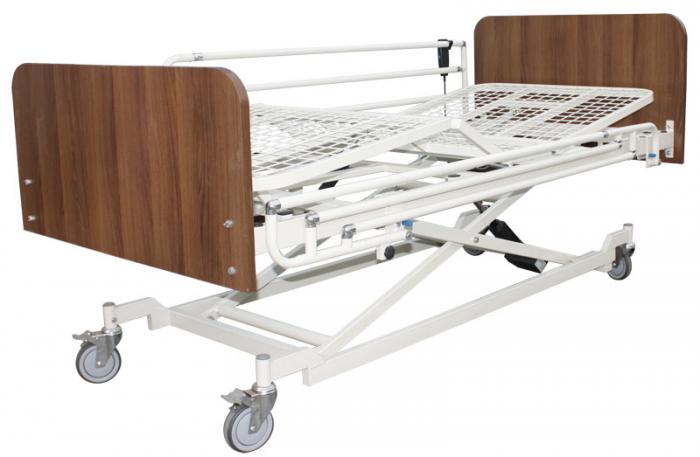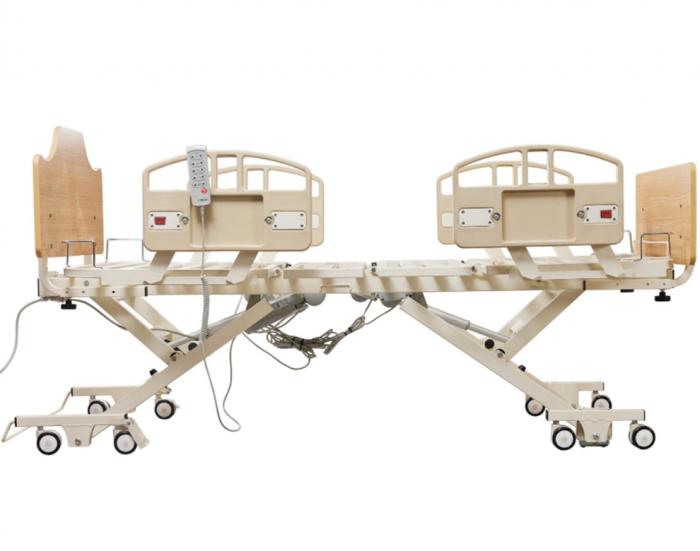| Name: | Long Term Care Bed (Economy) |
|---|---|
| Model No.: | BES-HB001 |
| Product Name: | Economy Long Term Care Bed |
| Brand: | BESCO |
| Price: | US575 |
| MOQ: | 30 units |
| Weight Capacity: | 450 lbs |
| LEAD TIME: | 25 days |
| SAMPLES: | available |
| Keywords: | Long Term Care Bed,Economy Long Term Care Bed,Long Term Care for Sale |
| Country of Original: | China |
| Stock: | NO |
| Payment Term: | T/T in advance |
| Office: | Zhengzhou,China |
Products Description
long term care bed (Econmy)
Features:
450 lbs. weight capacity,Resident Weight 425 lbs
Best in class heightrange 7.8"to 30''
Integrated 76"and 80" length extension
Eight (8) Function Handheld Pendant Controlincludes Auto Contour
3Dc Motors keeps bedlevel with true vertical lift
Four sealed bearingsfor smooth/quiet ifting
Eight 3" Heavy Duty casters roll at anyheight,4locking,2 caster guide locks
Fixed wall bumper
Options:
Assist Rails, Assist Bars
Bed ends,two styles and three wood grain laminate colors
Height-Low Position:198mm
Height-High Position:760mm
Weight Capacity:450lbs
Bed Dimensions:1955×912×198mm
Motors:
3 DC Motors, The overalliting motor
loading 8000N, the back motor
loading 5000N, and the leg motor
loading 3500N,Input Voltage:100-240VAC,50/60 Hz
Deck Style:Steel pipe welding
Functions:Bed lifting, back plate lifting,leg plate lifting
Comfort Chair:Head deck lifting angle 60°
Leg/Foot Lift:Maximum hip-knee angle 30
Warranty:10 Years on Frame,15 Years on Welds,2 Years on Electrical
Caster Base:3 inch casters,2 head casters with brake,and 2 without brakes.With directional limit,2 foot casters with brakes and without brakes.
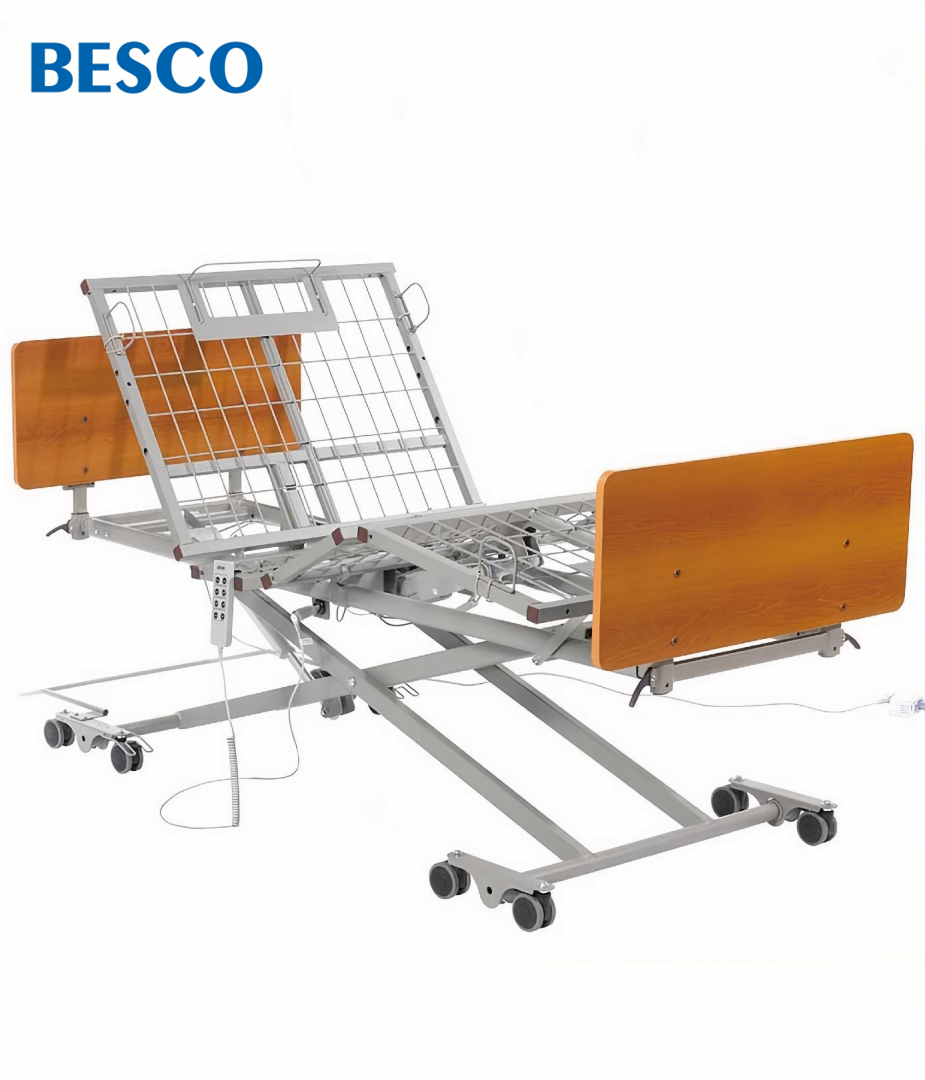
A long term care bed is a specialized type of bed designed for individuals who require extended care and support due to chronic illnesses, disabilities, or limitations in their ability to perform daily activities. These beds are typically found in nursing homes, assisted living facilities, and rehabilitation centers, but can also be used in a home setting for those receiving in-home care.
Here's a more detailed explanation:
Purpose: Long-term care beds are designed to provide comfort, safety, and support for individuals who need assistance with mobility, personal care, and other daily tasks due to various health conditions.
Key Features:
Adjustability:
Many long-term care beds offer height adjustability (high/low feature) and can be adjusted in sections to facilitate patient positioning, transfers, and caregiver assistance.
Customization:
These beds can be customized with various accessories like specialized mattresses, side rails, overbed tables, and lighting to meet individual needs and preferences.
Safety Features:
Safety features like side rails, fall protection, and sturdy construction are often incorporated to minimize the risk of falls and injuries.
Bariatric Options:
Bariatric beds are available for individuals with higher weight requirements, offering extra width and reinforced construction.
Electric Profiling Beds:
These beds offer electronic controls for height and section adjustments, aiding in patient mobility, positioning, and comfort.
Distinction from Hospital Beds:
While both hospital and long-term care beds are designed for medical settings, they differ in their primary focus and features. Inspace Healthcare Furniture says hospital beds are often designed for acute care and patient transport, with more complex adjustability and features. Inspace Healthcare Furniture notes long-term care beds emphasize comfort, ease of use for daily care, and customization to individual needs.
Long-term care beds may not always include features like all-electric controls or as many adjustment points as hospital beds, but they are designed to be highly customizable to meet the specific needs of residents in long-term care settings.
To use a long-term care bed, first ensure the wheels are locked unless moving the bed. Use the hand control to adjust the head and foot sections for comfort and medical needs, and adjust the overall height for caregiver access and patient transfers. Always use the side rails if there is a fall risk and keep emergency items like a phone and call bell within reach.
Basic operation
Lock the wheels: Lock the casters to keep the bed from moving. Unlock them only when you need to move the bed.
Use the hand control: Locate the hand pendant or control panel.
Press the "up" or "down" buttons for the head and foot sections to adjust them to the desired position.
For optimal comfort when sitting up, raise both the head and knee sections to create a supportive "pocket".
Use the "up" or "down" buttons for the overall bed height to make it easier to get in and out of bed or for caregivers to provide care.
Use the manual crank (if applicable): Some beds have a manual crank to adjust the bed's height, often located at the foot of the bed. Turn it clockwise to raise and counter-clockwise to lower.
Check power: Ensure the bed is plugged into a properly earthed outlet. A backup battery will allow motor adjustments to return the bed to a horizontal position during a power outage.
Safety and positioning
Side rails: Keep side rails up if the person is at risk of falling.
Emergency call: Place a phone and a call bell within easy reach so the user can call for help when needed.
Stable transfer: Use proper transfer techniques and assistive devices to move the patient in and out of the bed to prevent injury.
Night lights: Use night lights to help prevent falls in low-light conditions.
Stable footstool: If a footstool is needed to get out of bed, make sure it is strong and stable.
No smoking: Do not smoke or light matches/candles in or around the bed.
Maintenance
Cleanliness: Regularly clean the bed frame, side rails, and control panel according to the manufacturer's instructions.
Linen: Change and wash bed linens frequently to maintain hygiene, especially for bedridden individuals.
Inspect for damage: Regularly check the mattress and frame for any signs of wear or damage.
